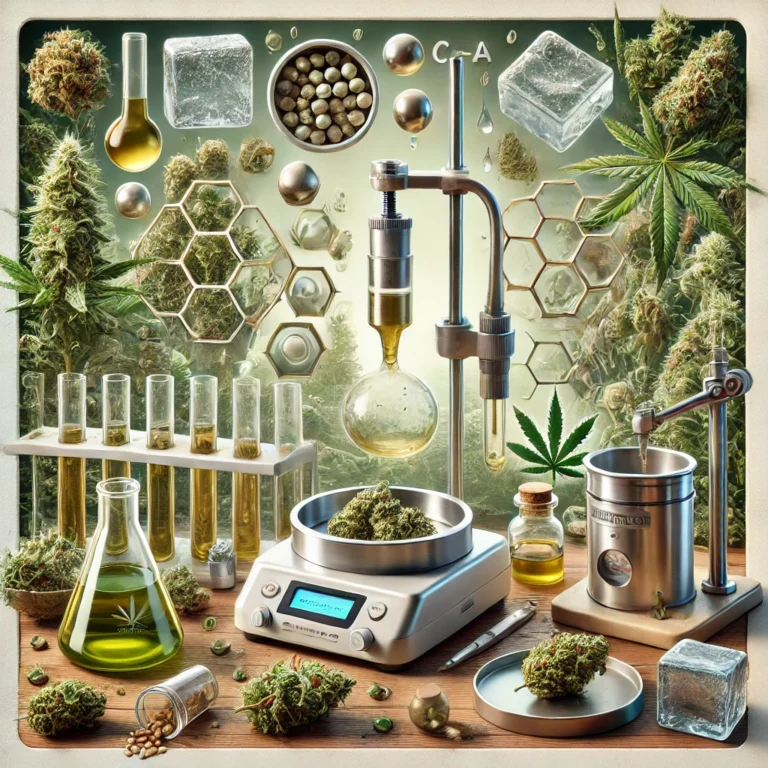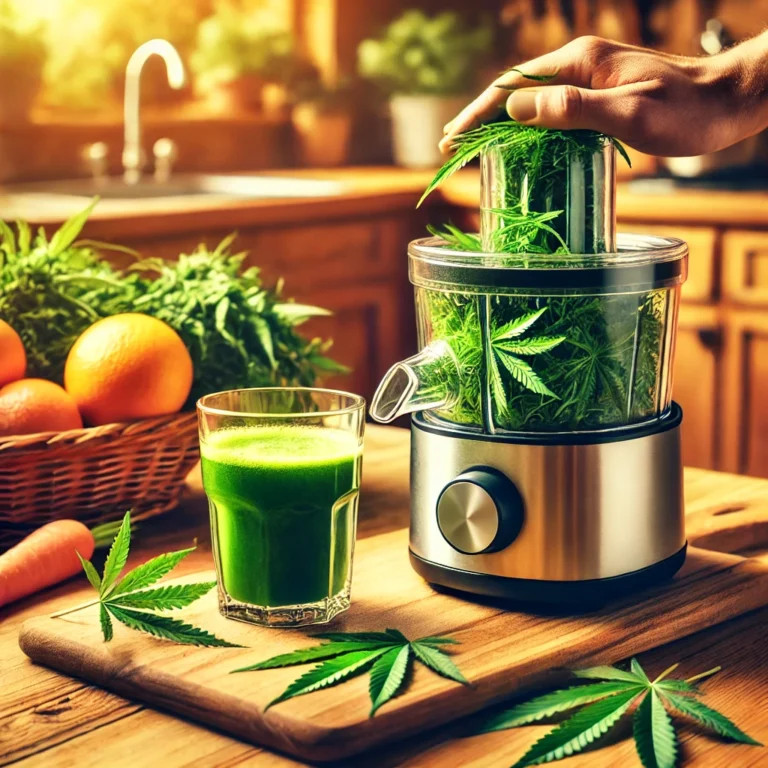The cannabis industry has grown rapidly, and understanding THC-A extraction techniques has become vital for those interested in the science and benefits of raw cannabinoids. THC-A (tetrahydrocannabinolic acid) is the precursor to THC, the compound responsible for cannabis’s psychoactive effects. Let’s dive into the most common extraction methods, how they impact THC and terpenes, and the difference between consuming THC and THC-A.

THC-A is a non-psychoactive cannabinoid found in raw cannabis. Unlike THC, it doesn’t induce a high unless it’s decarboxylated through heat, such as smoking or baking. Its potential health benefits include anti-inflammatory, anti-emetic, and neuroprotective properties.
This method uses solvents like ethanol or butane to extract THC-A and other cannabinoids.
Process: Plant material is soaked in the solvent, which dissolves cannabinoids and terpenes. The solution is then evaporated to remove the solvent, leaving behind a concentrated extract.
Impact on THC and Terpenes: This method preserves THC-A and a significant portion of terpenes due to the controlled temperature. However, improper techniques can lead to terpene degradation.
Pro Tip: Ethanol is considered safer than butane due to its lower volatility and fewer impurities.
This is one of the most advanced and popular methods for extracting THC-A.
Process: Carbon dioxide is pressurized and turned into a supercritical state, where it behaves as both a gas and a liquid. This supercritical CO2 is passed through the plant material to extract cannabinoids and terpenes.
Impact on THC and Terpenes: CO2 extraction preserves terpenes exceptionally well, and the resulting product is pure and potent. The process allows precise control over which compounds are extracted.
Fun Fact: CO2 extraction is considered environmentally friendly as it doesn’t produce toxic byproducts.
This solventless method uses ice water and agitation to separate trichomes from the plant material.
Process: Cannabis is submerged in ice water, then agitated to break off the trichomes, which are filtered through mesh screens.
Impact on THC and Terpenes: This technique preserves THC-A and terpenes exceptionally well due to the absence of heat or solvents. The resulting product is rich in cannabinoids and flavorful terpenes.
Pro Tip: This is a popular choice for DIY enthusiasts due to its simplicity and lack of chemicals.
This solventless method uses heat and pressure to extract THC-A-rich resin.
Process: Cannabis flower or hash is placed between parchment paper and pressed using a heated press.
Impact on THC and Terpenes: While the heat may cause minimal terpene loss, the process retains a significant amount of THC-A.
Fun Fact: Rosin extraction has gained popularity for its purity and simplicity.
A newer technique, cryo-ethanol extraction, uses sub-zero temperatures to extract THC-A.
Process: Ethanol cooled to cryogenic temperatures is used to extract cannabinoids and terpenes without the need for high heat.
Impact on THC and Terpenes: This method minimizes terpene degradation and preserves THC-A effectively.
Pro Tip: This is a preferred method for creating pharmaceutical-grade cannabis products.

Smoking or vaping THC-A will get you high because the heat decarboxylates THC-A, converting it into THC. This process removes the carboxyl group from THC-A’s molecular structure, transforming it into the psychoactive compound THC.
THC vs. THC-A: THC is psychoactive, while THC-A is not. Consuming THC-A in its raw form (e.g., through juicing cannabis) won’t produce a high but may offer therapeutic benefits.
The choice of extraction technique can significantly impact the final product:
| Extraction Method | THC-A Retention | Terpene Preservation | Psychoactive Effects |
|---|---|---|---|
| Solvent-Based | High | Moderate | Requires decarboxylation |
| CO2 Extraction | Very High | Very High | Requires decarboxylation |
| Ice Water/Bubble Hash | Very High | Very High | Requires decarboxylation |
| Rosin Press | High | High | Requires decarboxylation |
| Cryo-Ethanol Extraction | Very High | Very High | Requires decarboxylation |

THC-A begins converting to THC at around 220°F (104°C) when heated.
Consuming raw cannabis rich in THC-A can be done by juicing or using tinctures.
Some cannabis strains are specifically bred for high THC-A content.
Understanding THC-A extraction techniques is crucial for cannabis enthusiasts and professionals looking to maximize the benefits of raw cannabinoids. Each extraction method has its pros and cons, from preserving terpenes to retaining THC-A. Whether you’re exploring raw cannabis for therapeutic use or preparing it for decarboxylation, the right technique can make all the difference.
Join our community of cannabis enthusiasts and terpene explorers! Get exclusive insights, in-depth guides, and the latest discoveries. No spam—just pure, aromatic knowledge delivered straight to your inbox.
Subscribe now and elevate your cannabis wisdom!